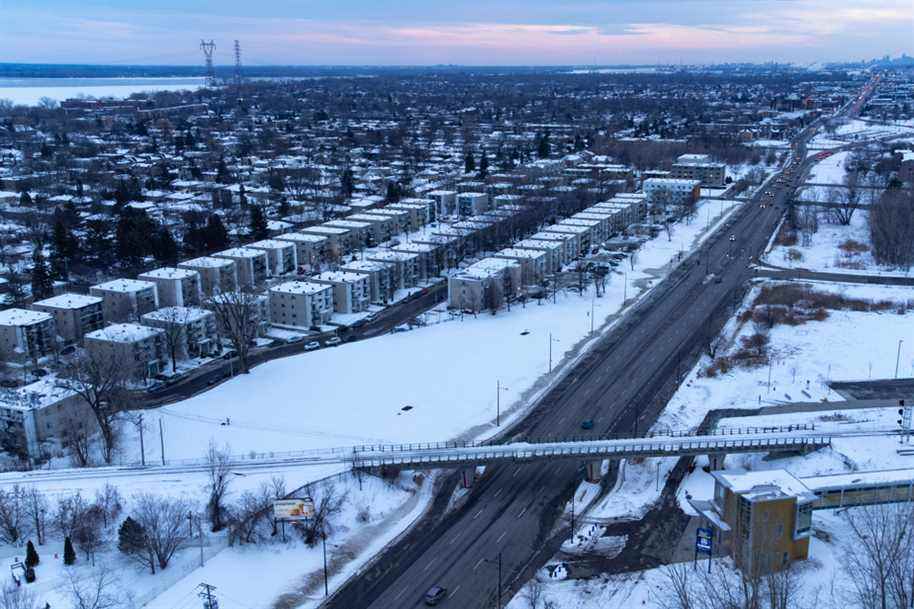The outraged reactions to the report by the Regional Metropolitan Transport Authority (ARTM) from some unconditional defenders of the Eastern REM are surprising.
Posted at 9:00 a.m.
How can we insinuate that the ARTM report is revengeful when several of the criticisms formulated have already been advanced by transport experts and development professionals, and this, in some cases, as soon as the project was unveiled by CDPQ? Infra? How can we brush aside the insoluble problem, from an urban planning point of view, of connecting the tunnel and the overhead deck to downtown Montreal?
How can we endorse competition between networks that can only be justified by CDPQ Infra’s business model and funding based on passenger-kilometres? How can we come to terms with a service that leaves several areas of the East in limbo, in particular the Rivière-des-Prairies district? How can we be surprised by the reaction of people who discover the horror of catenaries, which the preliminary presentations were obviously careful to conceal? How can we justify the unfortunate consequences of the REM project on the finances of the Société de transport de Montréal and, consequently, on the services offered?
How can we trivialize the fact that an investment of 10 billion generates only an extremely weak modal transfer from the car to public transport? And how can we force the mayoress of Montreal to do the work of the ARTM – moreover knowingly short-circuited by the government – on the pretext that she has legitimate reservations about the project?
What would be surprising is if, given these data, we persist in seeing this project as the only solution to public transit problems in eastern Montreal. The fact that it is the only one proposed − by a project leader who is judge and judged and is accountable only to himself − does not guarantee that it is the best.
Never mind, some persist and sign. And we don’t hesitate, if necessary, to twist reality.
In particular, it is claimed that the project was commissioned by the ARTM, which is incorrect. The REM de l’Est project was developed without the knowledge of the ARTM, which addresses it as one option among others in its 2021 strategic plan. of the Eastern REM by CDPQ Infra. The team responsible for the blue line extension project was only informed of CDPQ Infra’s project a few days before the announcement of the launch of the REM de l’Est, in December 2020.
It is also said that the governance of the project is exemplary, while the Mayor of Montreal maintains that the City’s requests for concrete participation in CDPQ Infra’s work were rejected out of hand and that, clearly, as is mentioned above, the ARTM has never really been involved, except to redirect CDPQ Infra’s requests to whom it may concern. Not to mention the imposition of confidentiality agreements, outrageously justified by industrial secrecy, but which, in fact, inhibit any enlightened public debate.
But we don’t stop there. It is claimed that the ARTM report is biased, among other things because it does not take into account the fallout from the Eastern REM, particularly in terms of real estate development.
Without insisting on the fact that such benefits are never guaranteed, it is important to emphasize that, until further notice, the preferred mode of transport does not have a monopoly on structuring effects, far from it.
But, moreover, little attention is paid to the negative impacts of the chosen mode – a light aerial train – on the host communities. How to justify this “double weight, two measures”?
It is also said to be one of the biggest investments in public transit on the planet. As if that was enough to guarantee the relevance and quality of the project and justified the refusal of a critical examination based on a comparison with an alternative. It will do us a good job if the apprehensions that have multiplied over the past few months turn out to be well founded and are well concreted. When we know that such infrastructures are inscribed in the landscape for several decades – as the Metropolitan highway reminds us –, isn’t it more reasonable and prudent not to confuse speed with haste and, above all, not to to be impressed by such bluster, which generally conceals a lack of credible arguments? There are other more socially acceptable ways to show off.

